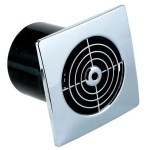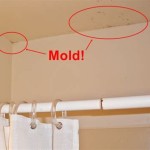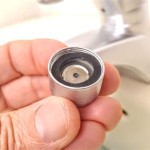DIY Bathroom Ventilation Fans: A Comprehensive Guide
Bathroom ventilation fans are essential for maintaining a healthy and comfortable bathroom environment. They remove moisture, odors, and pollutants, preventing mold growth, mildew, and respiratory problems. While installing a ventilation fan may seem daunting, it is a DIY project that most homeowners can accomplish with the right tools, materials, and instructions. This comprehensive guide will provide information on choosing the right fan, understanding installation requirements, and navigating the wiring process.
Choosing the Right Ventilation Fan
The first step in a DIY bathroom ventilation fan installation is selecting the appropriate fan for your needs. Several factors influence this choice, including:
- Bathroom Size: Larger bathrooms require fans with higher CFM (cubic feet per minute) ratings to effectively remove air.
- Ceiling Height: Taller ceilings require fans with greater airflow capacity.
- Noise Levels: Select a fan with an appropriate noise level for your bathroom. Some fans offer quieter operation.
- Features: Consider features such as humidistat control, timer settings, and LED lighting.
- Energy Efficiency: Look for fans with Energy Star certification for greater energy savings.
Reviewing product specifications and comparing prices from different manufacturers will help you choose a fan that meets your specific requirements.
Understanding Installation Requirements
Before beginning the installation, carefully review the manufacturer's instructions and local building codes. While the general installation process is similar for most fans, specific details may vary. Some key considerations include:
- Location: Install the fan near the shower or tub to maximize moisture removal. Choose a location with sufficient clearance from obstructions.
- Venting: Ensure the vent path is unobstructed and leads to the exterior. Consider using a duct extender if necessary.
- Electrical Wiring: Consult an electrician if you are unsure about electrical wiring. Ensure the fan is wired to a GFCI (Ground Fault Circuit Interrupter) outlet for added safety.
Having the necessary tools and materials readily available is crucial for a smooth installation. These include:
- Screwdriver
- Drill
- Stud Finder
- Level
- Measuring Tape
- Wire Strippers
- Safety Glasses
- Work Gloves
Navigating the Wiring Process
The wiring process requires careful attention to safety and accurate connections. Familiarize yourself with basic electrical concepts and follow the manufacturer's instructions precisely.
Disconnect the power supply to the bathroom circuit before beginning any wiring work. Identify the wires: a black wire (hot), a white wire (neutral), and a green or bare copper wire (ground). Connect the wires from the fan to the corresponding wires in your bathroom's electrical box. Ensure all connections are secure and properly insulated before restoring power.
If you are not comfortable with electrical wiring, consult a qualified electrician for assistance.
Testing the Fan
Once the wiring is complete, restore power and test the fan's functionality. Ensure that the fan switches on, rotates smoothly, and exhausts air effectively. If you notice any problems, troubleshoot the issue, or consult an electrician for assistance.
Installing a bathroom ventilation fan is a worthwhile DIY project that improves your bathroom's comfort, health, and energy efficiency. With proper preparation, planning, and careful execution, you can confidently install a ventilation fan that meets your specific needs and enhances your bathroom environment.

How To Make A Est Exhaust Fan For Room Washroom

Diy Bathroom Fan Vent Cover Blog Homeandawaywithlisa

Diy Bathroom Fan Vent Cover Blog Homeandawaywithlisa

How To Install A Bathroom Fan Homeserve Usa

Diy Quick Howto Make A Bathroom Ventilation Fan Using Pc In Just 1 Minute

How To Install A Bathroom Exhaust Fan

Bathroom Extractor Fans A Diy Guide

How To Install A Bathroom Fan Step By Guide Bob Vila

10 Clever Diy Projects To Hide Household Eyesores Bathroom Vent Fan Cover

Average Cost To Install A Bathroom Fan Forbes Home
Related Posts







